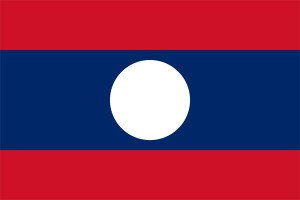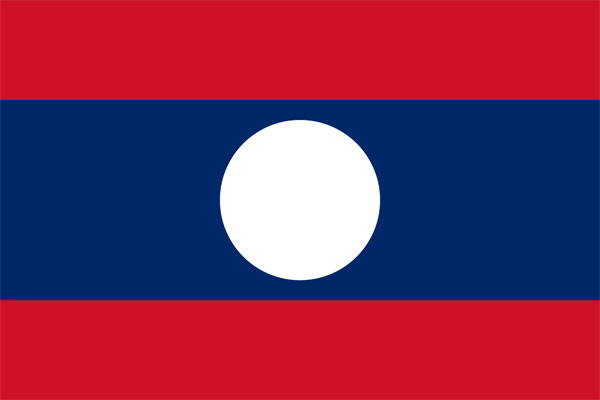A landlocked country between China, Vietnam, Cambodia, Thailand and Myanmar, Laos is enjoying a renewed economic development thanks to its strategic position between strong neighbors and new projects for hydro-electricity.

- Official country name: Lao People’s Democratic Republic
- Capital: Vientiane
- Total Area: 237,955 km²
- Government: Unitary Marxist–Leninist one-party Communist republic
- Currency: Kip – LAK
- Drives on the: right
- Calling Code: +856
- Internet TLD: .la
Demographics
- Population: 6,492,228 (2015 census)
- Population Density: 26.7/km²
- Official Languages: Lao
- HDI: 0.586 (medium)
- Ethnic Groups: (2005)
- 55% Lao
- 11% Khmu
- 8% Hmong
- 26% others
Taxes in Laos
Aiming at helping local businesses and foreign companies, the Lao government has set an attractive tax system.
Key economic data of Laos
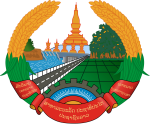
- GDP (PPP): USD 41 Billion (2016 Estimate)
- GDP per Capita (PPP): USD 5,718
- GDP (Nominal): USD 14 Billion (2016 Estimate)
- GDP per Capita (Nominal): USD 1,921
- GDP Growth: 6.8% (2016 Estimate)
- GDP by sector: (2011 Estimate)
- agriculture: 37.4%
- industry: 20.2%
- services: 42.6%
- Labor force: 3.7 Million (2010 Estimate)
- Labor force by occupation: (2010 Estimate)
- agriculture 75.1%
- industry n/a
- services n/a
- Unemployment: 2.5% (2009 Estimate)
- Inflation: 7.6% (2011 Estimate)
Main industries of Laos
Laos heavily relies upon its natural resources and hydroelectricity for its economy. Its renewed economic dynamism in industry also pushes the construction industry. The tourism industry is also benefiting from a new interest in the Lao culture and its UNESCO World Heritage sites.
- copper
- tin
- gold and gypsum mining
- timber
- electric power
- agricultural processing
- construction
- garments
- cement
- tourism
Laos digital
The improving infrastructures and spread of mobile phones have helped Laotians to access the Internet and digital services.
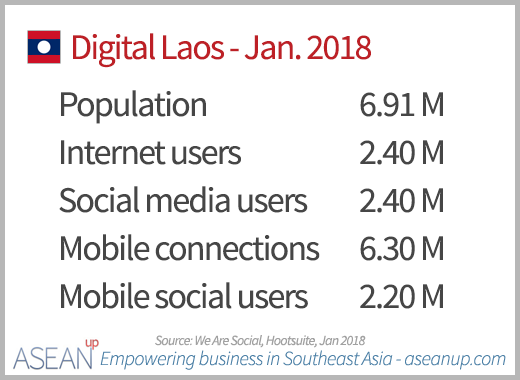
Laos trade data
With low trade volumes, Laos aims at more trade through the development of industry and improved exploitation of natural resources.
Exports: USD 2.13 Billion (2011 Estimate)
Export Goods:
- wood products
- garments
- electricity
- coffee
- tin
- copper
- gold
Main Export Partners: (2012 Estimate)
- Thailand 32.8%
- China 20.7%
- Vietnam 14.0%
Imports: USD 2.336 Billion (2011 Estimate)
Import Goods:
- machinery and equipment
- vehicles
- fuel
- consumer goods
Main Import Partners: (2012 Estimate)
- Thailand 63.2%
- China 16.5%
- Vietnam 5.6%
Recent Resources
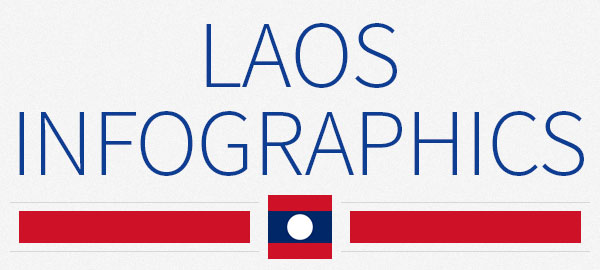
Though Laos is one of the smallest countries of ASEAN in demographic and economic terms, it is nevertheless a fast-developing country with important natural resources. This series of infographics illustrates key demographic and economic data of Laos, together with comparisons with other ASEAN and world-leading countries.

Blended in the country’s tranquil tropical charm and original architectural styles, the Laotian culture is represented in the World Heritage Sites of the UNESCO through two sites of historic value, the remains around the Hindu temple of Vat Phou as well as the entire town of Luang Prabang, the old capital of Laos.

Taxes in Laos are among the lowest in the region: a low corporate income tax, a low progressive income tax and a low VAT make the country attractive for business. The Lao taxation system is quite simple and straightforward to encourage investment in the country and help develop its burgeoning economy.
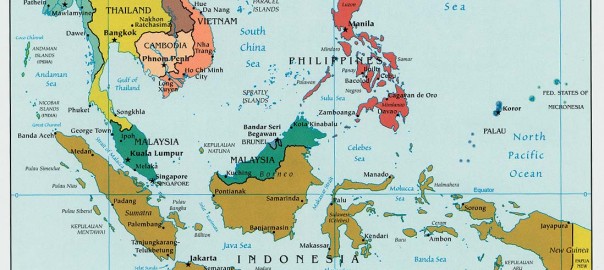
Some maps might come in handy to illustrate your point in your website or blogs, so here is a collection of some free maps available around the web for South East Asia and each of the 10 ASEAN countries: Brunei, Cambodia, Indonesia, Laos, Malaysia, Myanmar, the Philippines, Singapore, Thailand and Vietnam.

